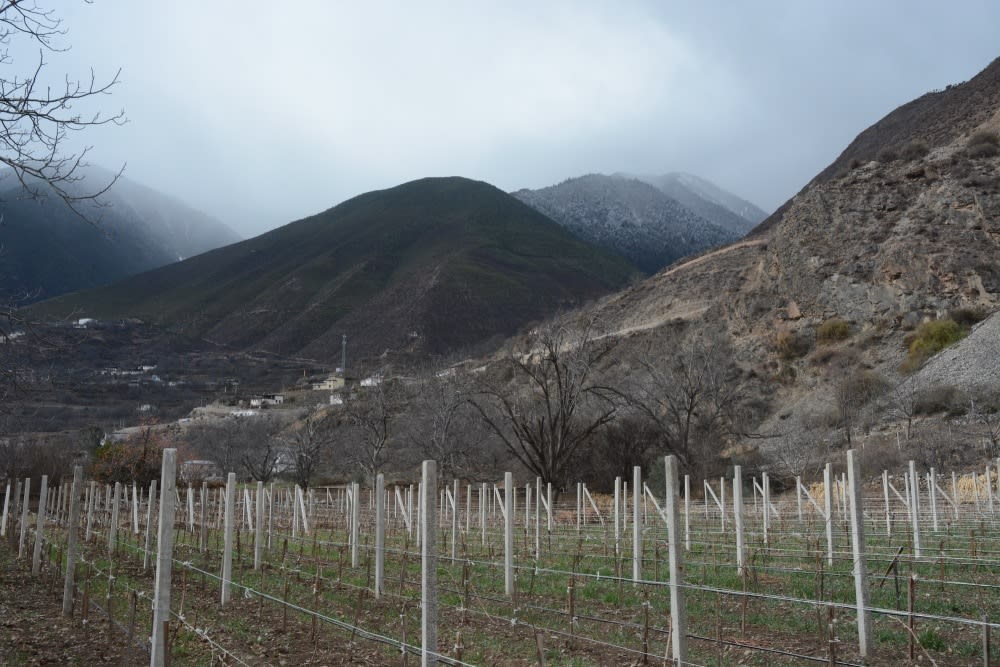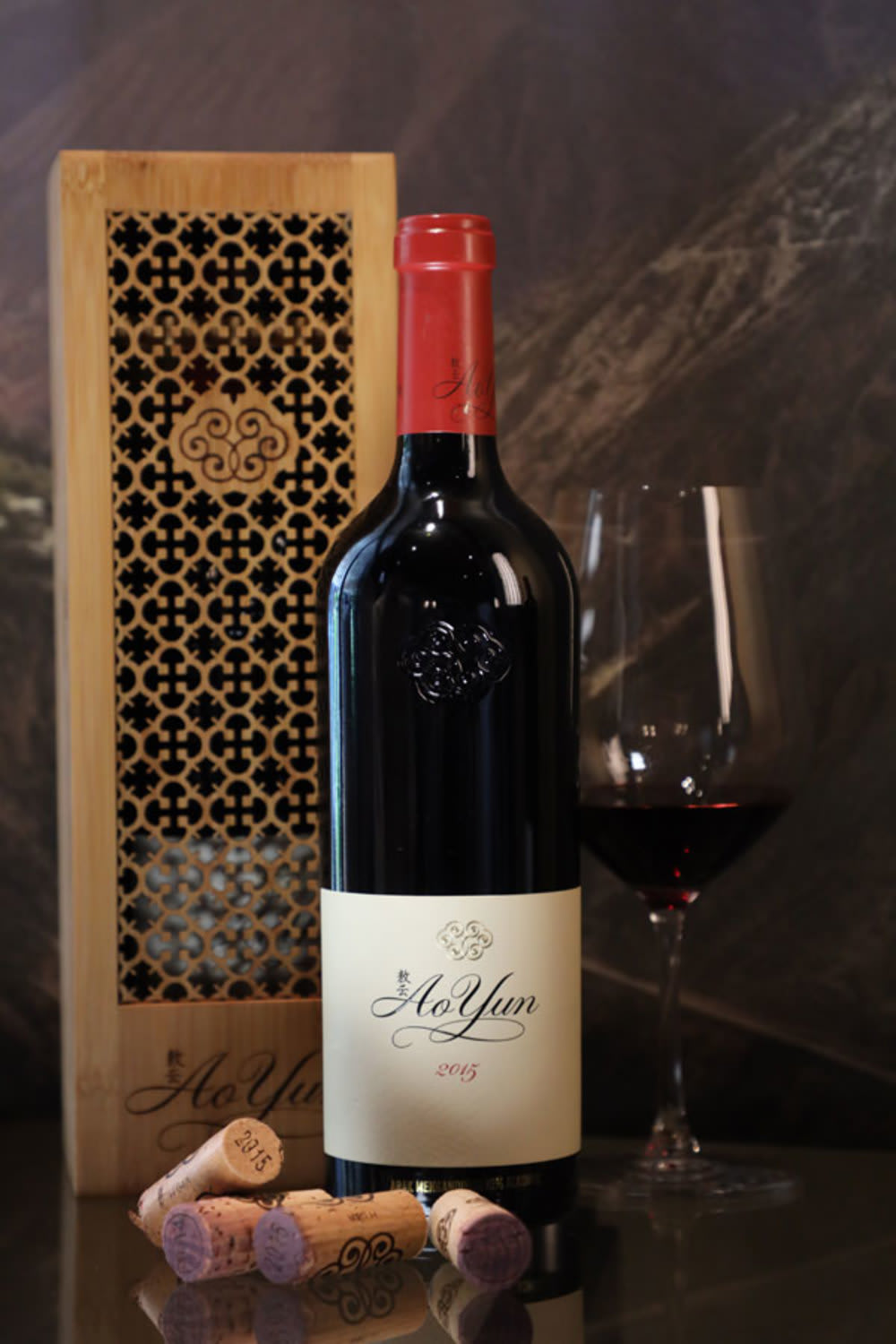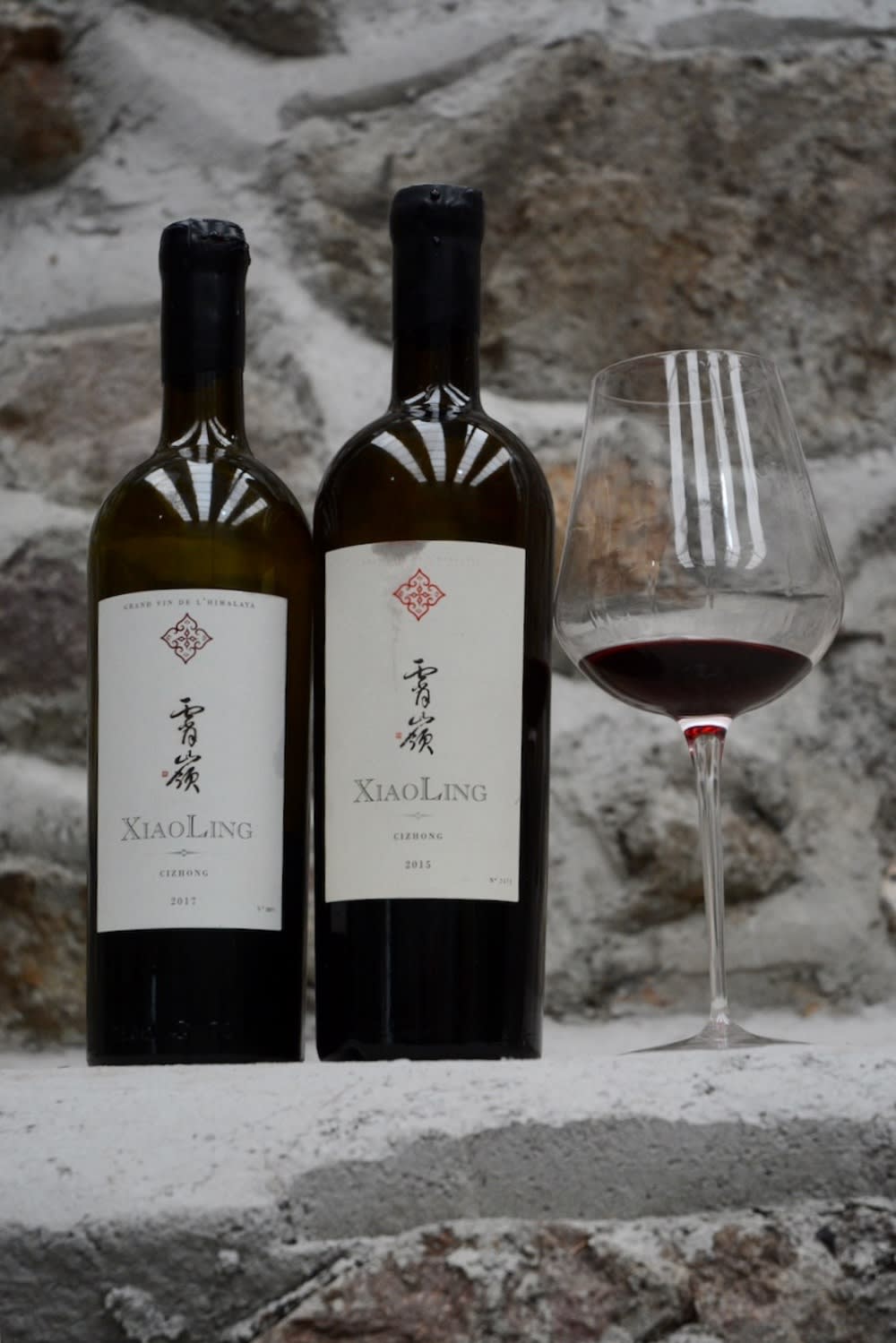Yunnan province may be too warm for vine growing, but it is more than compensated by its high altitude. The vineyards in Shangri-La, the Tibetan highlands in the north-west of Yunnan adjacent to Sichuan and Tibet, are planted above 2,000 metres and up to even 2,900 metres.
At present, there are less than 10 wineries in Yunnan, of which three only make ice wine. Two of these wines from Yunnan are available in Hong Kong.
The remote village of Adong (阿東), at 2,600 metres above sea level, is home to the most internationally known Yunnan wine, Ao Yun (敖雲).
Visting Adong, we were greeted by the stunning snow-covered vineyard against steep slopes. Vineyard manager Rémi Vincent explained that Ao Yun is the result of a painstaking four-year search for the perfect wine-growing site in China by late winemaker Tony Jordan for LVMH. The estate sources grapes from 28 hectares of Cabernet Sauvignon, Cabernet Franc, Syrah and Petit Verdot grown in four different villages that are between 2,200 and 2,600 metres in altitude, tended by 120 families under the strict supervision of the Ao Yun viticultural team.
Retailing at around HK$2,590 per bottle, Ao Yun is the most expensive wine from China for a reason. The average yield is only 20–25hl/ha, and all the wine is aged in the barrel (50% new and 50% one year old) for around 15 months. Since wine is less expressive at high altitudes, blending is done in the lower altitude of Hong Kong. Only 20,000 bottles of Ao Yun wine are made each year. The 2018 and 2019 barrel samples we tasted are from different villages, and they are each dense and polished.
At a lower altitude is the village of Cizhong (茨中), where winemaking was introduced by French missionaries around 150 years ago, and there are still old vines within the church walls of the village. Bertrand Cristau, a Frenchman based in Shanghai, had a calling to revive the missionaries’ wine-growing activity following his first visit to the region in early 2010. He eventually set up XiaoLing (霄嶺) in 2013, a small outfit with only three hectares of of Cabernet Sauvignon, Merlot, Carménère and Chardonnay scattered in four nearby villages. The barrel samples we tasted – a 2018 Merlot, 2018 Cabernet Sauvignon and 2017 Cabernet/Merlot blend – are well-integrated with discreet oak and show good potential. XiaoLing only made 15,000 bottles in 2019. Its 2015 vintage is being sold at $718/bottle.
The styles of Ao Yun and XiaoLing are quite different. Ao Yun is plush and glamorous, while XiaoLing is more subtle and refined. Which wine is better is up to one’s individual preference. I myself opt for the more delicate XiaoLing. But there’s one thing that’s certain: making wine in Shangri-La is challenging because of its remoteness and lack of infrastructure, so don’t expect the prices of these wines to come down anytime soon.
Both Ao Yun and XiaoLing wines are available in Hong Kong at Watson’s Wine.
For more wine articles like this, like Foodie on Facebook











